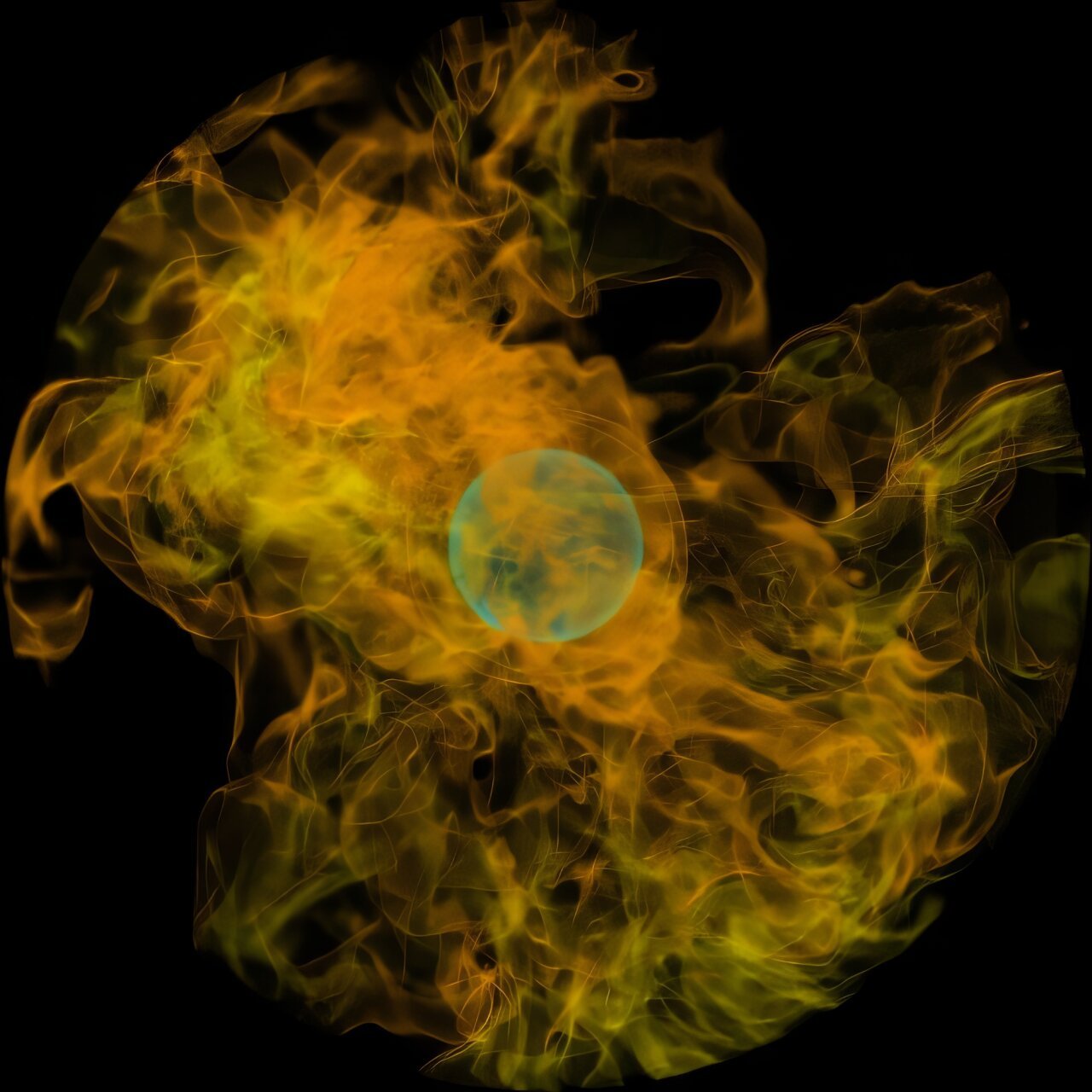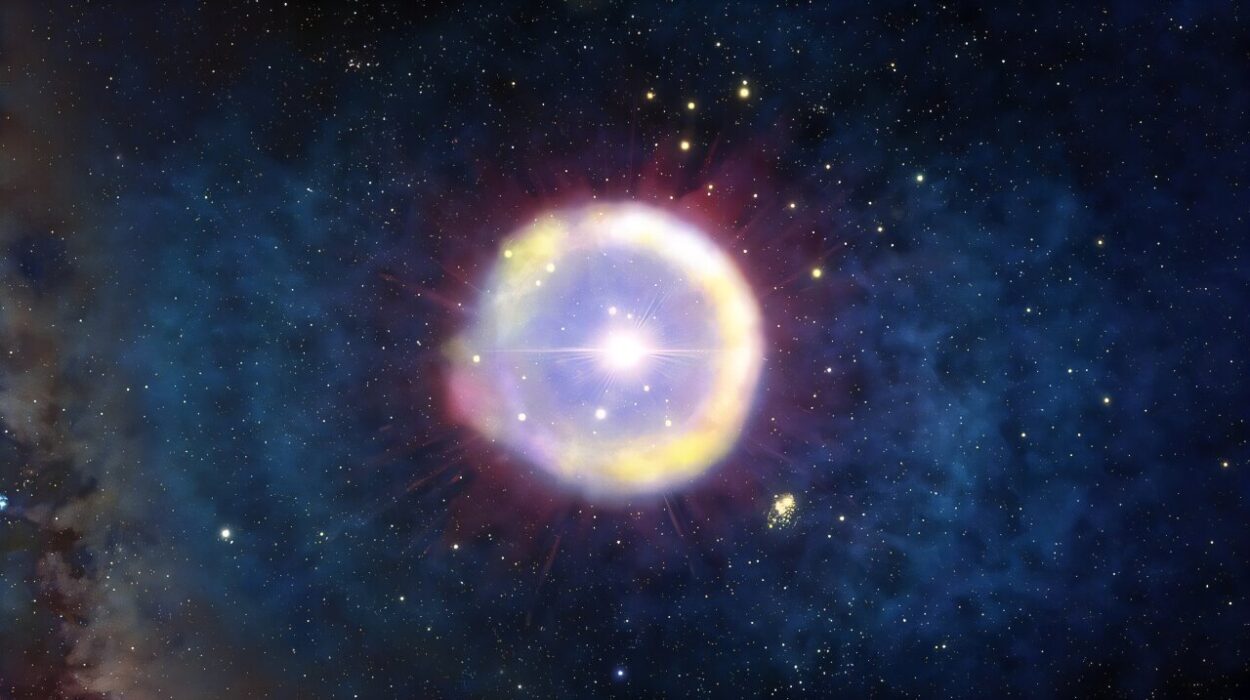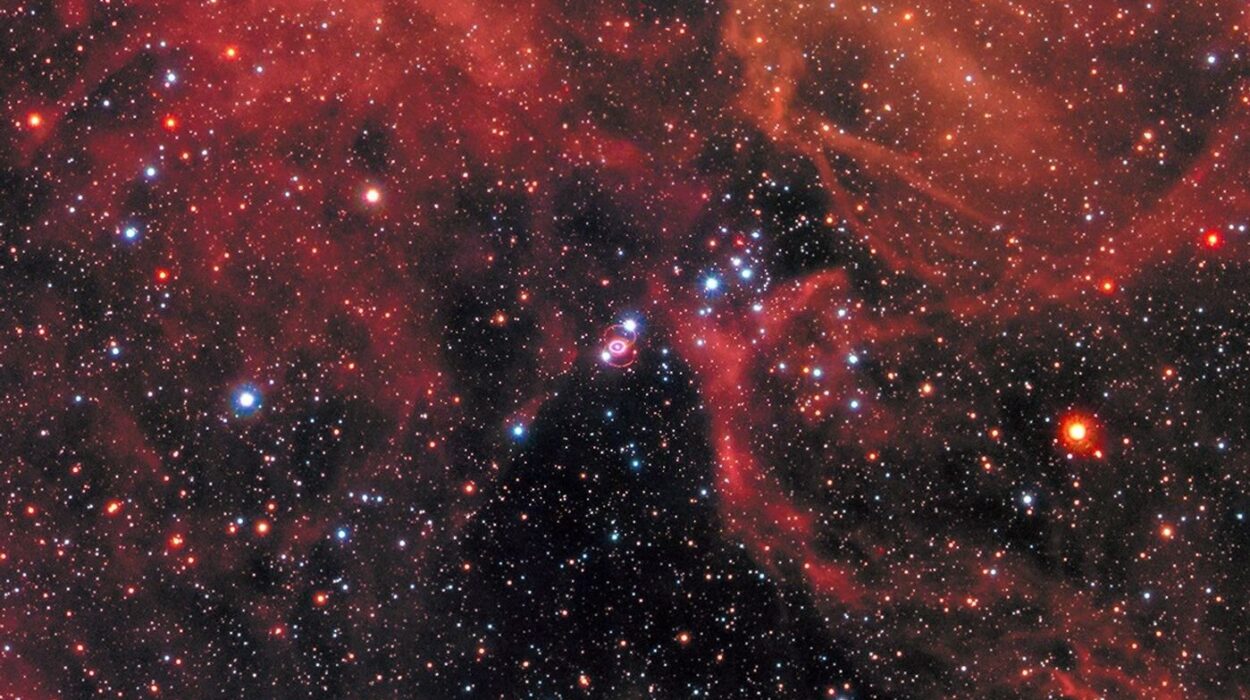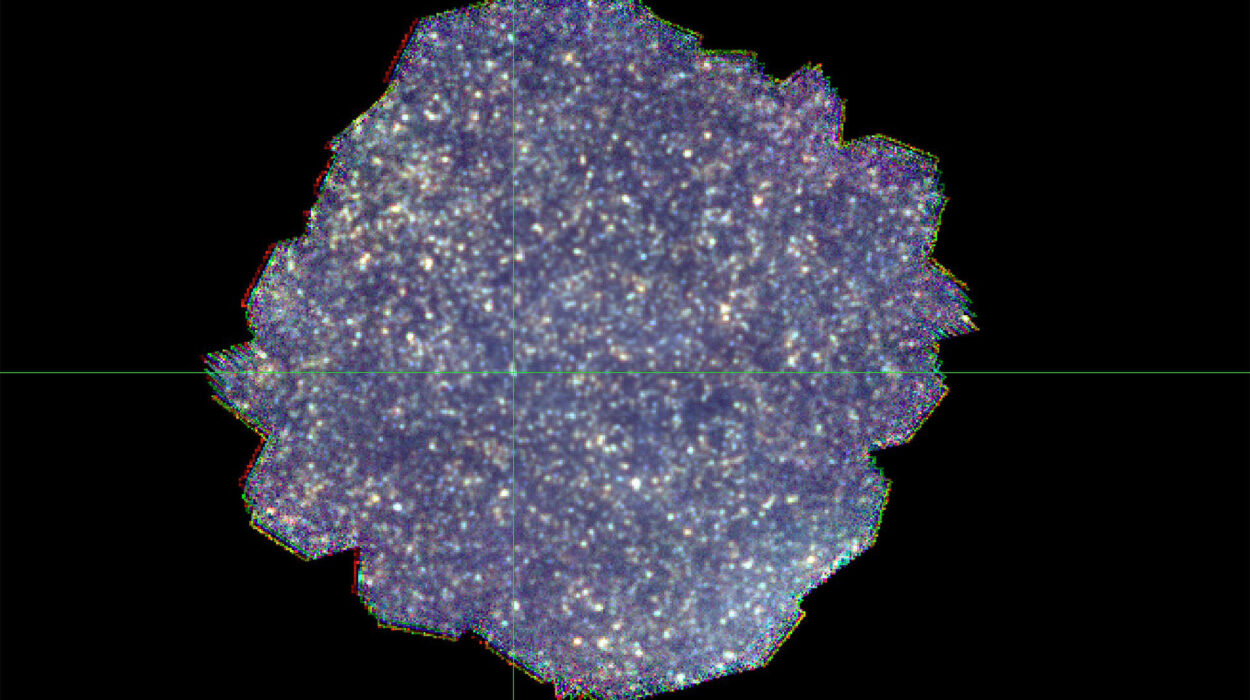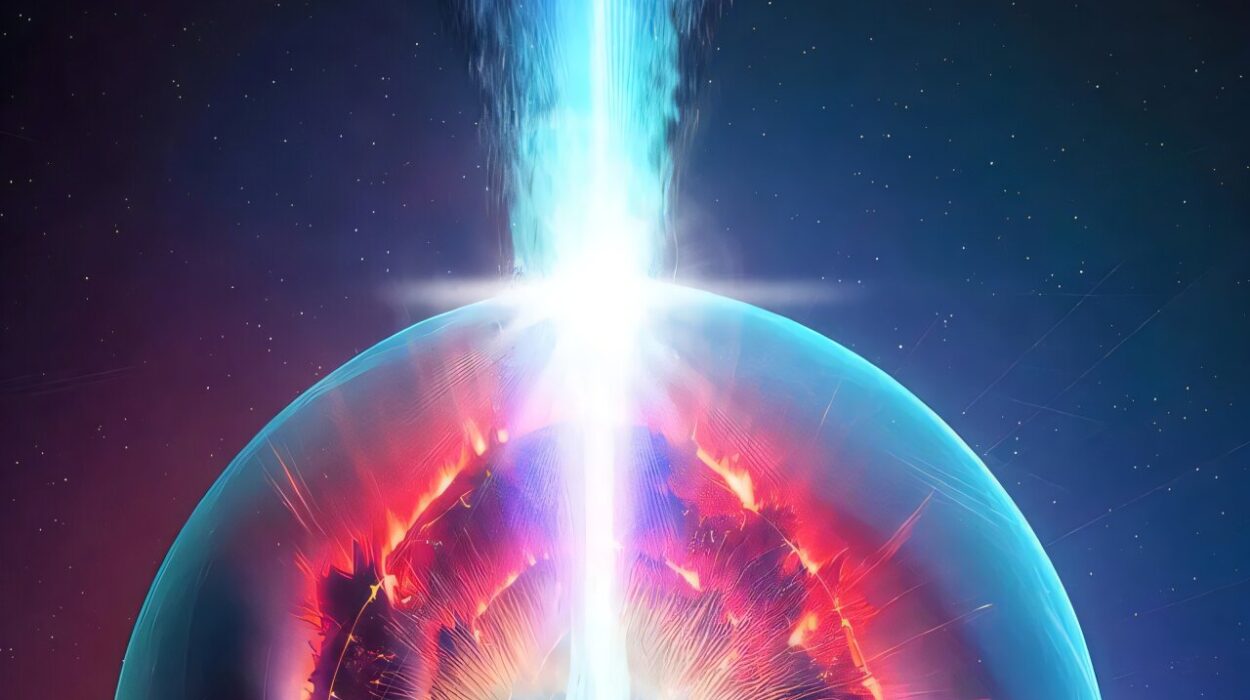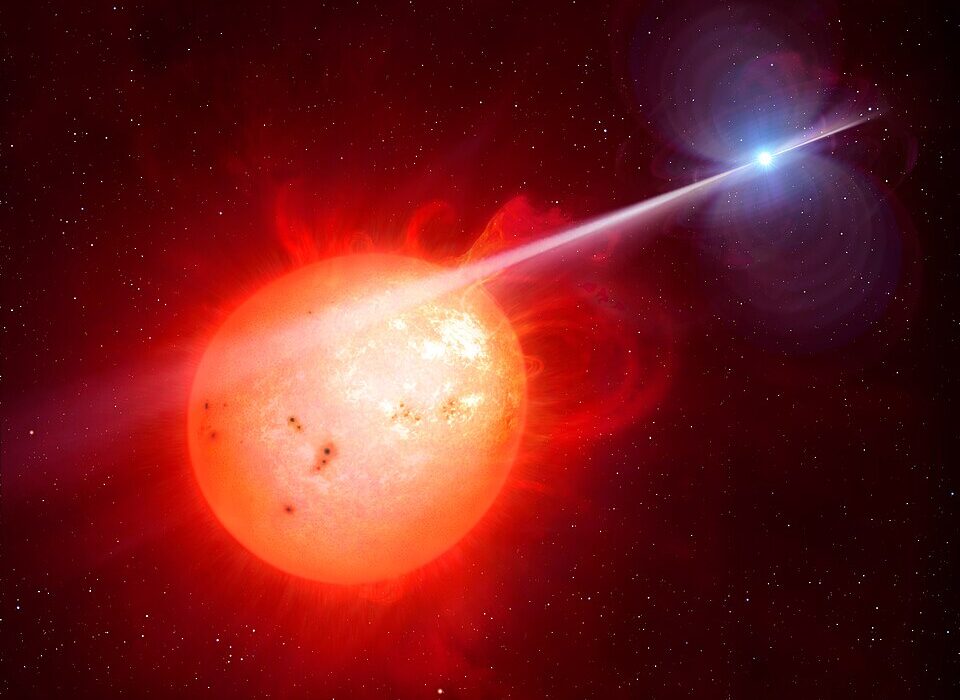In 2015, astrophysicists made an intriguing discovery in the field of stellar evolution when they identified a binary system consisting of two compact stars orbiting each other: a pulsar and its companion. The pulsar, a rapidly rotating and highly magnetized neutron star that emits regular pulses of electromagnetic radiation, is in orbit with a companion star whose mass is significantly lower than typical neutron stars. This star, in the J0453+1559 binary pulsar system, has a mass of approximately 1.174 solar masses (M⊙), which is considerably lighter than most neutron stars whose masses have been accurately measured. This finding prompted a range of theories and debates among scientists regarding the true nature of this companion star.
The Mystery of the Low-Mass Companion Star
The companion star in the J0453+1559 system presents a mystery that continues to puzzle astrophysicists: Could it be a neutron star, or is it a white dwarf? While some researchers have suggested that the companion star might be a neutron star, others have raised doubts, proposing that it could be a white dwarf instead. The difference between these two types of stellar remnants is significant, as they originate from distinct stellar processes.
- Neutron stars are formed when massive stars (typically those with at least 8 times the mass of the Sun) undergo a supernova explosion. The core of the star collapses under gravity to form a compact, extremely dense object composed mostly of neutrons.
- White dwarfs, on the other hand, are the remnants of stars with lower to medium mass (between 0.8 and 8 times the mass of the Sun). These stars expel their outer layers in a planetary nebula, leaving behind a dense core that no longer undergoes nuclear fusion. The core becomes a white dwarf, supported by electron degeneracy pressure.
In the case of the J0453+1559 system, the mass of the companion star is lower than typical neutron stars, which raises the question of whether it could indeed be a white dwarf.
The Role of Simulations in Understanding the Companion Star
To resolve the mystery surrounding the companion star’s identity, researchers from Monash University and Swinburne University of Technology set out to explore the possibility that the star might still be a neutron star. The team used 3D supernova simulations to model the supernova explosions that might lead to the formation of a neutron star with such a low mass. The research, published in Physical Review Letters, provides compelling evidence in support of the hypothesis that the low-mass star in J0453+1559 could indeed be a neutron star, rather than a white dwarf, as was suggested in some earlier studies.

The Methodology: Supernova Simulations and Stellar Evolution Models
The work of Bernhard Müller, first author of the paper, alongside collaborators Alexander Heger and Jade Powell, began with a deep dive into the existing stellar evolution models. These models help scientists understand how stars evolve and eventually end their lives. Müller and his team searched through a vast database of stellar evolution models to find possible progenitors of the low-mass star in J0453+1559. Their goal was to identify stellar configurations that could lead to the formation of a neutron star with a mass as low as 1.174 solar masses.
The researchers focused on 25 different stellar evolution models that represented stars close to the threshold for undergoing a supernova explosion. They narrowed their focus to five stars that appeared to have the potential to form low-mass neutron stars based on the mass and structure of their cores, particularly the iron and silicon cores, which play a crucial role in the supernova process.
The next step was to run 3D simulations of supernova explosions for these five progenitor stars. Supernova explosions are highly complex, and understanding how they proceed requires taking into account not only the properties of the progenitor star’s core but also the intricate dynamics of the explosion itself. For example, some matter may fall onto the neutron star during the explosion, which can affect the final mass of the neutron star. These simulations aimed to predict the mass of the resulting neutron star with high accuracy.
Key Findings and Implications
The results of the simulations, which spanned from the collapse of the progenitor star to the supernova explosion, were promising. According to Müller and his colleagues, the simulations suggested that the mass of the star in the J0453+1559 system could indeed be consistent with a neutron star rather than a white dwarf. They found that the supernova dynamics could allow the formation of a neutron star with a relatively low mass, supporting the idea that such objects could exist and explaining how they might form under certain conditions.
This finding challenges earlier assumptions that a low-mass star in such a binary system would likely be a white dwarf. It also adds to a growing body of evidence showing that the neutron star mass distribution is more varied than previously thought. The fact that neutron stars with low masses might exist raises important questions about the formation processes of such stars and how stellar evolution models need to be refined to accommodate this new possibility.
Müller emphasized that the study demonstrated the power of 3D simulations in explaining the distribution of masses for neutron stars and black holes. These simulations allow scientists to test different theoretical models of stellar evolution and supernova explosions, making it possible to explore more accurately the birth processes of compact stellar remnants and their unique properties.
The Road Ahead: Further Simulations and Research
While the study has made significant strides in resolving the mystery of the low-mass star in the J0453+1559 system, the researchers are not stopping here. Müller, Heger, and Powell plan to conduct additional 3D simulations to further refine our understanding of how neutron stars and black holes are born, including their masses, birth velocities, and spin rates.
An important area of focus for future simulations is the origin of neutron star magnetic fields. Some neutron stars, known as magnetars, have extremely powerful magnetic fields—up to 1,000 times stronger than typical neutron stars. These magnetic fields can reach strengths of up to 1015 Gauss, and scientists are still trying to understand why some neutron stars are born with such strong fields. 3D simulations could offer valuable insights into how these intense magnetic fields are generated during the formation of magnetars and how they affect the star’s behavior.
Conclusion
The discovery of the low-mass companion star in the J0453+1559 binary pulsar system has led to new questions and challenges in astrophysics. Thanks to the groundbreaking 3D simulations performed by researchers at Monash University and Swinburne University of Technology, the possibility that the star is a neutron star, rather than a white dwarf, has become more plausible. This work underscores the importance of computational tools in modern astrophysics and how simulations can help scientists uncover the secrets of stellar birth, evolution, and death.
In the future, as computational power increases and more simulations are run, researchers hope to gain a deeper understanding of the processes behind the formation of neutron stars, black holes, and magnetars. These simulations will not only help us learn more about the J0453+1559 system but will also deepen our understanding of the complex and fascinating lives of stars and their eventual demise.
Reference: Bernhard Müller et al, Minimum Neutron Star Mass in Neutrino-Driven Supernova Explosions, Physical Review Letters (2025). DOI: 10.1103/PhysRevLett.134.071403. On arXiv: DOI: 10.48550/arxiv.2407.08407
